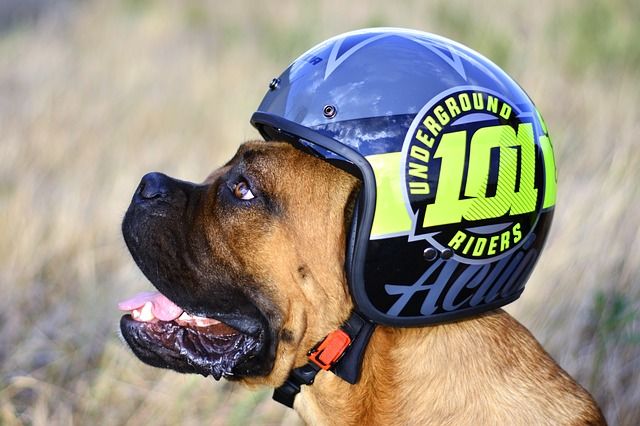Safety

Use it Safely
To ensure that accidents are avoided, please read all of the instructions below on how to use it properly.
A Sloofa is not a toy, so it shouldn’t be used by used by those under 14 years of age without supervision. The cords could represent a hazard to small children, so it should be kept out of reach.
By the nature of what a Sloofa does, accidents will happen if it is used incorrectly or where it shouldn’t be used.
We want you to be happy with your Sloofa, and above all not to sustain any injuries while using it, to either yourself, others and of course your dog, so please take the time to read this document as it should help to avoid some of the hazards that you are likely to encounter.
This Sloofa was only designed to be used with a ball of the correct size and weight and it should not be used for any other purpose, nor maliciously.
An underarm throwing technique is the only recommended way to throw it, and it only requires one or two gentle revolutions to do so. Avoid rotating it excessively with a weighty ball within it, as the extra weight will damage it particularly around the eyelets.
It is also important not to use balls which are too heavy as these are likely to cause injury. Some dogs have also sustained injuries from playing with tennis balls and while the Sloofa is perfectly capable at throwing them, it is up to the owner to decide if they wish to use them or not.
Solid balls in particular could cause significant injury if they were to hit someone with any force, and for that reason the Sloofa should not be used in areas where others are in the vicinity. It was designed to be used in clear open spaces which are free of hazards, property, people and animals.
Avoid all areas where there are cliffs, sea walls, water, boundary fences and hedges, bridges, ditches, walls, roads, railway lines, embankments, overhead obstructions, property, cars, people, animals etc. The general rule of thumb is only to use it an open space such as a quiet field. It is also important to be aware of what is behind the thrower, as it is very easy to accidentally throw it behind, which could result in injury or damage. When a misthrow like this occurs, you also need to be aware when using it with a dog, that the dog is only focused on getting the ball, and is unlikely to see any hazard, so this is important. Check all around you prior to throwing. Anything within the Sloofa’s throwing range represents a hazard, even a fence behind you.
Beware of overhead hazards such as trees, power cables, roofs. The solid ball is likely to damage even a slated roof should it land on one. Greenhouses and conservatories are particularly vulnerable for obvious reasons.
Ditches, rivers, lakes and the like – Should a ball happen to go into water or onto a frozen lake it is usually safer to consider the ball as lost than to try and retrieve it. Often embankments can be too steep and it isn't worth the risk of trying to recover any ball in such a situation. Your dog is also likely to be at risk, so be prepared to call your dog back or distract it from pursuing such a ball when it happens. Sometimes the dog may be distracted by using another ball.
Remember your dog doesn't see the dangers and hazards and is likely to pursue the ball wherever it is thrown! For some dogs, retrieving balls that float from water is part of the fun, but please assess your surroundings carefully, before throwing. You should also have due regard for others using the water such as canoeists, boats, water skiers, fishermen, and swimmers, animals, etc. For some dogs, retrieving a ball which has been thrown into a thicket or wood, will represent a challenge, but there could be unknown hazards within that area, so use with caution in those areas.
Be considerate of your surroundings when other people are about. If space is available to throw it, it will probably be wiser to use a soft ball rather than a heavier ball, but if there is any doubt, avoid using it at all.
By using it in a clear open space, there will be sufficient room for the ball to bounce wherever, but in other areas, the ball could bounce high enough to go where it wasn’t intended or ricochet off an object. Some dog balls are designed to bounce irregularly and if they are fundamentally round and about tennis ball size, the Sloofa will throw them, but again use only in hazard free open spaces.
Do not underestimate the distance and height that the Sloofa can throw a ball, and sometimes it may be better to change the direction that you throw the ball to ensure that hazards are avoided.
"Just look at this guy!"

Cord Whipping Injuries -To avoid injury from the cord, it's important to read the instructions on how to throw it properly, to minimise any injuries of this nature. When you receive your Sloofa, you will notice that the end of the release cord has been partially heat sealed, which prevents it from fraying. This was done deliberately, but there is a slight risk of the release cord flicking back into the throwers eye/face. By reading and following the full instructions on how to throw it properly, the risk of cord whipping injuries will be reduced if not eliminated.
While this doesn't happen all the time, you need to know how to deal with it when it does, and there are a couple of techniques that can be used to avoid it. Firstly, make sure that you follow through with your throwing arm after the ball is released, as this tends to take the released cord further away from your body. Keep your arm straight also, as this keeps the cord away from the face. If you fail to follow through with your arm, you increase the risk of the cord whipping back into your face. While this is unlikely to do any harm, it is unpleasant. Another technique that can be used, is to be ready with your free hand to wave off the cord coming back to you. As a last resort, you can also close your eyes, before it hits you, but it is better to use one of the other techniques. Once you become more experienced with throwing it, this will no longer be a problem.
Loose cords on your clothing – If you happen to be wearing a coat with loose cords dangling freely, the movement of your arm can cause those unrelated cords to whip back into your face occasionally. To avoid this, tie them up to shorten them so that they do not do this. Loose cords on clothing can also tangle with the cords of the Sloofa.
Avoiding injury to your dog – most dogs will start to run once you start the swinging action but there is a slight risk that you could hit them while commencing the swing. As your dog gets used to you using the Sloofa, the risk of this happening will reduce, but take care when you first introduce them to it.
The dog will occasionally be hit with the ball and usually they are too excited to even notice it, and its unlikely to do them any harm, particularly if a solid ball isn’t being used. They may also try to catch a ball after a high lob, but this is unlikely to be repeated after they've done it once.
Cord loop – sometimes if this is not tied properly it can have a tendency to tighten around your finger. This should be corrected as soon as possible as it could be painful if you are unable to loosen it quickly. The cord loop should feel comfortable and loose but must not be left to tighten.
Don’t let your dog play with the Sloofa as it could damage either the cord or the webbing. Some dogs may also have a tendency to try and get the ball while it is in the Sloofa, particularly when excited, so be careful when using.
Using the Sloofa close to others – Do not use it if anybody is standing in front or at the back of you. Ensure that they standing to the side of you. Remember also that situations can change, so check around you again just before you throw it.
Be careful not to hit the ball against your leg or your foot as you swing it, as the ball is likely to come out from the sling. If it catches on the ground you need to shorten the string. If the ball regularly leaves the sling prematurely, shorten the cord lengths until it no longer does it.
Learn how to sling properly. It makes it easier and minimises the mishaps. Remember practice makes perfect. Start with gentle throws initially, and as you get better then try for distance and height.
When using it for recreational play, ensure that all players are watching before throwing the ball towards them.
Check the Sloofa periodically to ensure that the cords are attached properly and the stitching is sound on the actual sling.
Occasionally, you may find that the sling may accidentally slip from your finger when throwing a ball. This usually happens because the finger hasn't been curled to prevent it, but it’s more likely to cause embarrassment rather than any physical harm.
Do not let your dog chew the balls. Tennis balls can be particularly hazardous to dogs and even solid balls can be damaged, so once your play has finished, it is better to take the ball away from your dog.



